Today we travel to a future where we can tattoo sensors right onto our skin. What happens when you can get a live readout of everything from glucose to hormones to hydration levels built into a tattoo? What kind of privacy can you expect when your medical data is literally written on your skin? And what does any of this have to do with Inspector Gadget and René Descartes?
Guests:
- Ali K. Yetisen — researcher at Imperial College London
- Ace Tilton Ratcliff — disability activist, writer, co-founder of Harper’s Promise
- Eler de Grey — interdisciplinary artist & writer
- Quinn Grundy — researcher at the University of Toronto
Further Reading:
- Dermal Abyss
- Designing Smart Tattoos To Help Monitor Your Health
- Chaotic Moon Explores Biometric Tattoos For Medicine And The Military
- These tattoos only become visible when detecting cancer-linked disease
- Synthetic biology-based cellular biomedical tattoo for detection of hypercalcemia associated with cancer
- Clinical Trial Tests Tattoo Sensor as Needleless Glucose Monitor for Diabetes Patients
- Low-cost, μm-thick, tape-free electronic tattoo sensors with minimized motion and sweat artifacts
- What’s inside Motorola’s digital tattoo?
- BiostampRC
- How private is your mental health data? An empirical study of mental health app privacy policies and practice
- Data sharing practices of medicines related apps and the mobile ecosystem: traffic, content, and network analysis
- The body is not a machine
- On the body as machine
- The body made machine: On the history and applications of a metaphor
- The machine body metaphor: From science and technology to physical education and sport, in France (1825-1935)
- The Machine-Body as Contested Metaphor in Clinical Care
Actors:
- Maria — Cara Rose de Fabio
- Gaby — Eler de Grey
- Marquis — Rotimi Agbabiaka (check out his new solo show called Manifesto on June 21 at the African American Arts and Culture Complex as part of the National Queer Arts Festival.)
- John — Keith Houston (also check out his karaoke nights in San Francisco)
Flash Forward is produced by me, Rose Eveleth. The intro music is by Asura and the outtro music is by Hussalonia. The episode art is by Matt Lubchansky. Special thanks this episode to
Adria Otte and Molly Monihan at the Women’s Audio Mission, where all the intro scenes were recorded this season. Check out their work and mission at womensaudiomission.org.
If you want to suggest a future we should take on, send us a note on Twitter, Facebook or by email at info@flashforwardpod.com. We love hearing your ideas! And if you think you’ve spotted one of the little references I’ve hidden in the episode, email us there too. If you’re right, I’ll send you something cool.
And if you want to support the show, there are a few ways you can do that too! Head to www.flashforwardpod.com/support for more about how to give. But if that’s not in the cards for you, you can head to iTunes and leave us a nice review or just tell your friends about us. Those things really do help.
FULL TRANSCRIPT BELOW
▹▹ ▹▹ ▹▹ ▹▹ ▹▹ ▹▹ ▹▹ ▹▹ ▹▹ ▹▹ ▹▹ ▹▹ ▹▹ ▹▹ ▹▹ ▹▹ ▹▹ ▹▹ ▹▹ ▹▹ ▹▹ ▹▹ ▹▹
Rose: Hello and welcome to Flash Forward! I’m Rose and I’m your host, here to guide you through another possible or not so possible future scenario. If you’re new to the show, here’s the deal: Flash Forward is a show about the future. Every episode we consider a different scenario — what if we had artificial wombs, what if we all suddenly went faceblind, what if space pirates dragged a second moon to Earth? This is the second episode in the BODIES mini-season, so last week we considered what might happen if we could see at night. And this week, well, I’m not going to give it away just yet, you’ll have to wait a little longer. We always start with a little fictional field trip to the future, to check out what’s going on, and then we teleport back to today to talk to experts about how that world we just heard might really go down. Got it? Great!
Before we go to the future two things! First, a reminder that I’m currently running a special! Patreon! Offer! If you become a patron between now and June 30th, you get a special surprise in the mail from me! Plus, patrons already get a ton of cool stuff — $2 an episode gets you a special secret newsletter. $5 an episode gets you bonus episodes with behind the scenes stuff, clips I couldn’t fit in the episode, and secrets from me. $7 an episode gets you access to the Flash Forward book club! Every month we read a book, discuss it, and you get to hear me interview the author of the book, in which I ask them your questions from the book club. And $10 an episode gets you a big goody bag AND the chance to be a voice in the future scenes on the show. Patreon is the only reason Flash Forward can continue to exist, so if you like the show and want to support what I’m doing, now’s a great time to join. So go to patreon.com/flashforwardpod for more about all of the stuff I just talked about.
Second thing! I want to tell you about another podcast that you might like. It’s called What the If? The show is hosted by Philip Shane and Matt Stanley and every episode they ask a hypothetical question like… what if World War I hadn’t happened? What if all the volcanoes in the world showed up to the same party? What if we never stopped going to the moon? What if we humans were cold blooded? All kinds of fun questions, and to answer them they have some really cool experts on, and combine humor, sci-fi references and all kinds of fun geekery. You can find them on your podcasting app, whatever you’re using to listen to this show most likely, and again the show is called What the If?
Okay! Now let’s go to the future! This episode we’re starting in the year 2049.
[ring tone]
[shuffling] [ping]
Maria: Hello?
Marquis: Hi!
Maria: Hey! Can you hear me?
Marquis: Loud and clear! Let me add John and Gaby… one sec.
[more shuffling]
[ping]
Gaby: Hello? Hello?
Maria: Hi!
Marquis: Wooo ten year anniversary call is almost a go. Is John on?
[ping]
Marquis: Ah, there he is.
Maria: John I think you’re muted.
[talking over each other]
Gaby: Push the microphone button
Maria: We can’t hear you.
Gaby: The red microphone button in the top right corner.
John: — hello? Hello? Now? Hello? [music in the background]
Maria: Aha! Now we can hear you. Can you… turn that music off though?
John: Oh yeah… sorry… sorry… one second.
[music turns off]
[shuffling again]
John: Okay, I’m back.
Maria: Yay! Wow, we actually found a time that worked for everybody! It’s been way too long.
[awkward silence]
Maria: Um, so I don’t know, should we start with updates I guess? I can go first… I’m living in Sacramento now with Veronica, who I think… Marquis you’ve met right? At Farah’s wedding?
Marquis: Yeah!
Maria: Right! I guess you’re the only one who’s met her, but, well, Veronica and I met at this conference in Napa a couple of years ago. She’s an artist, she makes these giant iron sculptures of faces, they’re very cool. She’s actually in the studio right now, working on this big piece she’s doing for Burning Woman which is in a couple of weeks. But yeah, we moved into this place about a year ago I guess? And that’s going super well.
*whipsers* I’m probably going to propose soon.
John: Nice!
Marquis: Congrats!
Maria: Yeah! I’m excited! I’m not sure exactly how it will go, she’s said [lightly sing-songy mocking voice] that she doesn’t believe in the institution of marriage. But… I think she’ll still say yes. So that’s the big thing for me. Still working on this biotech company… we’re really close to getting the eye drops past the last FDA hurdle so, fingers crossed, that will be big news in the next year or so I think… [trails off] That’s my big stuff… John?
John: Oh yeah, um, well congrats! That’s exciting. Uhhhhh, me, well, I’m still in Jersey. Things are good… working at the lightbulb store, still got the dog… Going on a road trip next month with my buddy Alan to go see Frog in concert in a couple of places… all pretty much the same old same old here I guess.
Maria: What happened to … Allison? Was that her name?
John: Amanda! Yeah you know… she’s good. She went to medical school in Baltimore though, you know, so … I don’t really see her much. She’s just really busy and like, doing the doctor thing.
Maria: Aw, I liked her.
John: Totally. She’s very cool. But yeah, I don’t know, living her life… Gaby, what’s your life like these days?
Gaby: Eh, I mean, kinda rough, if I’m honest. I don’t want to kill the vibe though.
Marquis: No way, tell us what’s up.
Gaby: Well, I’ve been kinda sick for a couple of years. Pretty sick. I guess you guys probably know I was in the hospital for a while…um, it’s kind of complicated. Nobody really knows what’s going on with me, basically, but my body is unhappy in general these days.
Maria: Have you done a genetic screening panel?
Gaby: Yeah, I’ve done everything…
Maria: Have you tried going gluten free
Gaby: [interrupting] Sorry I’m just going to… I’m just going to interrupt you, and say, that I’ve tried pretty much everything and it’s not super helpful for me at this point to hear suggestions. I have a good team of doctors now. So, I’m good on that, and I would appreciate you guys just listening and not giving any tips.
Maria: [defensive] I’m just trying to help
Gaby: Yeah I know, and I’m telling you that the most helpful thing for me right now is for you to not suggest stuff. [awkward silence] But… I do have something cool to show you, and actually Maria I think you’ll like this.
[holding her arm up to the camera]
I don’t know… if you can see this?
Marquis: Uhhhh
Maria: Maybe put your arm a little bit further from the camera? I don’t think it can focus that close
John: It’s a tattoo?
Maria: It’s a flower?
Gaby: Yeah, it’s a tattoo. But it’s a special tattoo. So… this actually has special ink inside each petal of the flower that reacts to different biomarkers. So when this one turns green, it means my glucose is low. When this one turns orange it means that I’m dehydrated. When this one turns blue it means my oxygen levels are low. And when this one turns red it means I’m about to get my period.
Maria: Oh I’ve heard of this!
Gaby: It’s a clinical trial right now, so it’s still kind of experimental.
John: Wait so like, right now the flower is no colors, what does that mean?
Gaby: That means that it’s not picking up any of the biomarkers that it’s sensing for.
Marquis: Whoa.
Gaby: Yeah it’s pretty cool huh?
John: So it’s like one of those fish tank dipper paper thingies… but on your skin.
Gaby: Yeah pretty much!
Marquis: Did it hurt?
Gaby: No more than a regular tattoo. And if it gets past clinical trials they’ve got a bunch of other sensors and stuff they’d like to try tattooing on me.
John: So you’re like a guinea pig.
Gaby: Kind of, I guess?
Maria: Hey Gaby do you think you could introduce me to the researchers? I bet they have tips for FDA stuff…
Gaby: Sure, I guess… yeah I think that would be fine? I’m mostly dealing with my doctors but I did go to their lab to get the tattoo done.
Marquis: So did they do the flower too? Or did you already have that?
Gaby: I had the flower already. They can do a kind of boring design, like little circles that each contain the dye that reacts and changes colors, but I already had a lot of tattoos to choose from. And they wanted to test and see if their ink worked okay with older tattoo ink. So we did it in the flower.
So yeah, that’s my big news. The idea is that if I can monitor more closely at home I can keep myself from getting into danger zones without realizing it…
Okay Marquis, what’s your news!
Marquis: Man that is hard to follow! I have no impending engagement, or fancy schmancy medical magic tattoo to show you. Um, I’m in Jacksonville finishing up business school. Which is horrible… I hate everybody here.
Maria: I told you!
Marquis: [laughing] You did, and I didn’t listen and here I am. But I’m a couple months from finishing and I’m going to make it. But wow, business school is a trip. Do not recommend!
Gaby: I hear that business school is a lot of bad behavior on yachts.
Marquis: Yeah that’s… not inaccurate.
John: Hey so Gaby, like, now that petal is looking kind of green… what does that mean again?
Gaby: Oh… yeah I guess you’re right. I didn’t even notice. It means my glucose is low, so… I gotta run and take care of that. It was great to catch up! Let’s do this again soon!
John: Peace!
Maria: Oh okay… bye! Maybe next time we can talk longer!
Gaby: Sounds good!
Marquis: Bye!
[ding] [ding] [ding] [ding]
Rose: So this future is one in which we can integrate a whole bunch of sensors into our bodies. We’ve got the start of this right now, right? There are glucose meters, people can use smart watches to track certain things. But there are research teams all over the world trying to make medical sensors better — smaller, less invasive, more sensitive, and more seamless with the body.
One example of sensors like these, are medical tattoos. And these come in a variety for forms, there are sensors that are more like temporary tattoos, that stick on the skin for a while and eventually rub or wash off. And then there are people working on permanent sensors, true permanent tattoo sensors.
Ali Kemal Yetisen: The technology seamlessly gets integrated within the skin and we don’t really see the sensors as a means of a device, it’s totally integrated within the within the skin itself.
Rose: This is Ali Kemal Yetisen. He’s a chemical engineer at Imperial College London, and a few years ago he worked on a project at MIT Media Lab called Dermal Abyss, which is a great band name. But sort of a terrifying name for a technology that might be tattooed onto you permanently. But hey, you know what, they didn’t ask me for my input.
Now, often when you think about doctors tracking stuff you probably think about blood tests. And it’s true, blood is a really good thing to test because it flows all through your body so it picks up all kinds of stuff along the way. But you don’t want to have to constantly be testing blood all the time right? That requires getting into a vein, it requires needles, it’s more complicated. If you could just read the stuff that’s in or on the skin, you could have something way less invasive.
There has been some work recently on trying to use sweat instead of blood – since sweat comes out of us and you don’t have to pierce the skin to get to it.
Ali: So there are some emerging technologies that can sense biomarkers for example in sweat samples but these sort of bodily fluids they do not really reflect what’s going on in our body because they’re a waste product.
Rose: So here’s a little science riddle: what gets under the skin, but doesn’t bleed. A tattoo! Well… I mean you do bleed when you get tattoos, but once they’re healed you don’t. I admit it’s not a great riddle… needs work… but you get what I mean.
The skin is a really complex living organ, and I think the skin actually gets kind of way less love than other organs. So here are some interesting facts about the skin.
Your skin is the largest organ in the human body. It accounts for something like 15 percent of your body weight. Which I guess makes sense since it’s, all over you, but I had no idea it was that much. That means that the average American woman, who, according to the CDC weighs 168 pounds, has 25 pounds of skin on her. That’s like, a small dog’s worth of skin! And that skin isn’t just a passive barrier between your more sensitive squishy bits and the outside world. It’s constantly renewing itself. In fact, skin cells grow, rise to the surface of your skin, and then die and slough off every thirty days.
And there’s this fluid that goes to the skin called interstitial fluid. And like blood, this interstitial fluid is full of stuff.
Ali: And this can be used as a surrogate medium to estimate the concentrations of biomarkers
Rose: Biomarkers are really anything you can measure in the body that indicate the presence of something you’re looking for. It’s like, let’s say you’re tracking an animal in the woods, and you find poop, and you’re like “aha, yes, a deer has been here because I can see this poop.” That is the biomarker.
So what if you could tattoo a special ink into someone’s skin, and that ink would react and change color every time it sensed whatever biomarker it was looking for? Well, that’s exactly the premise of the Dermal Abyss project.
Ali: For example if you have high glucose concentrations in your body, we can see that as a means of color change.
Rose: So, just like in the intro you heard, you could have a tattoo like Gaby’s that changed color if your glucose was low or high, or if you sodium was low or high, or if your electrolytes were low or high.
Ali: We’ve been recently contacted by a NASA team and they wanted to monitor calcium ions of the astronauts within the space. Apparently there is a constant loss of off bone when you are in space.
Rose: Athletes might also be really interested in this technology.
Ali: For athletic performance monitoring for you are interested in looking at hormones can be testosterone, it can be serotonin, and more interesting sort of neural hormonal markers.
Rose: I’ve read articles proposing that the military use these tattoos on their soldiers, to help monitor their health and biometrics. You can pretty quickly get into a dystopian future where these tattoos are mandatory in some fields. You could use it to catch people who are doping, with constant monitoring instead of pee or blood tests that could be faked. You could use it as a continuous pregnancy monitor, instead of having to pee on a bunch of sticks. Although Ali thinks that last one is less likely.
Ali: The real value of these sort of sensors are in continuous monitoring. So for example if you’re talking about pregnancy it’s normally one-off measurements so there is very little value of tattooing a sensor within the body to do just only one to one or two times measurements.
Rose: Although I will say, given the current anti-abortion laws rolling out across the United States, knowing you’re pregnant as soon as possible might be really appealing to some people. Six week abortion bans, for example, often catch people who didn’t know they were pregnant in the first place. A continuous pregnancy monitor, one that can tell you right away instead of having you wait until a missed period, could wind up being super useful.
Also, just, as an aside, I recently learned about the history of pregnancy tests and it’s incredibly weird and kind of sad. So today people pee on a little stick right? Or you can get a blood test. But we didn’t always know how to do that, and before we had those kinds of pregnancy tests that you can buy at CVS or Walgreens, we did… very strange things. In ancient Egypt they’d ask women to pee on wheat and barley seeds. If the wheat grew it meant she was having a girl, if the barley grew it meant she was having a boy, and if neither grew it meant she wasn’t pregnant at all. Uh, I’m just going to say that that is not a reliable test.
In the 1920’s, people would inject the urine of possibly pregnant people into mice, wait a few days, kill the mice, and dissect their ovaries to see if they had gotten any bigger. In 1930’s the test switched from mice to rabbits, but the overall idea was the same: inject rabbits with pee, wait a few days, kill the rabbit and inspect their ovaries. This test was so common in fact, that it led to a euphemism for getting pregnant, people would say “the rabbit died” if you were pregnant. The thing is, all the rabbits died, even the ones injected with the pee of not pregnant people because that’s how the test worked. In fact, lots of rabbits died! At just one Pregnancy Diagnosis Station they went through about 6,000 rabbits every year.
Then two researchers in South Africa discovered that if you inject the urine of a person into a specific kind of frog, and that frog started laying eggs, that worked as a pregnancy indicator. This particular frog, the African clawed frog was preferable to the rabbits because it was easy to catch, cheap, small and really easy to take care of. So the frog test replaced the rabbit test in most places. Between 1940 and 1960 tens of thousands of frogs were injected with human urine to act as living pregnancy tests. These frog was shipped all over the world to perform this function, and because the frog was so common in labs to do this pregnancy test it actually wound up popping up all kinds of other research and became what’s called a model organism, something that researchers use all the time, like lab rats.
But there’s also a dark, slimy underbelly to this frog story. Aside from injecting live animals with our pee and turning them into living dipsticks. And that’s that the African clawed frog, this particular species, is mostly immune to a fungus called Batrachochytrium dendrobatis, or Bd. I think I said that correctly. And you might have heard of Bd, because it’s the fungus that’s decimating frog populations all over the world. So between 2004 and 2008, one site in Panama lost 41 percent of all of its amphibian species to this fungus. Experts think that the fungus is responsible for the decline of over 500 amphibian species around the world, 90 of which have gone extinct because of Bd. And some researchers think that the international trade for the African clawed frog that resulted from this pregnancy test, might have actually been the thing that brought Bd around the world. And caused, as Ed Yong put it in The Atlantic, this frogpocalypse.
Anyway… where were we? Oh right, the pregnancy tattoo. So you could tattoo a continuous pregnancy monitor. Or, perhaps more useful to more people, you could have a tattoo that that tells you when your period was going to start, or even where you were within your cycle.
Ali: The most important thing here is is the continuous monitoring technologies like real time. For example within the pregnancy scheme, ovulation monitoring.
Rose: And the big picture idea Ali has here is to not just have one sensor tattoo, or a bunch of little sensor tattoos all over your body, but instead to create a system that integrates them all together.
Ali: So this technology can be designed as as sort of separate entities, having multiple different types of colors in physically separated regions within, you know, on the skin. But you can also mix these sort of colors. So for example if we have a sensor that operates within the UV range and visible range an infrared range we can tattoo them within the same region and their spectral response will be completely different. So smartphones will be able to use them.
Rose: So instead of having a lot of different dots or petals or regions, you could use different inks that all emit different wavelengths of light, and tattoo them all together in the same place. Then, when you want to check your levels, you use your phone’s camera to detect these invisible readouts.
Ali: So this is the, sort of, the future of medicine. This will be the steps to to achieve the person more personalized treatments in the upcoming coming decades.
Rose: Now, this isn’t to say there aren’t challenges here. So far, Dermal Abyss is mostly theoretical. They tattooed some tests onto pig skin, but it’s never been tried on anything living. And there are some questions about how exactly they would do this. They’d need to test the long term side effects of these dyes and figure out how much they have to use and how long the ink would last. Anytime you’re injecting something permanent or even semi-permanent into the body you have to be really careful. So Ali doesn’t think this is coming any time soon.
Ali: I will say we are looking at ten to twenty years. It’s a really futuristic project. The reason is that currently there are very strict regulations around designing these sort of implantable sensors.
Rose: And these systems are constrained by what we know how to measure. So remember my animal tracking analogy from earlier? That a biomarker is like finding deer poop in the woods? There are probably a ton of signals that indicate that a deer has been somewhere. Smells, visual cues, underground disturbances, all sorts of stuff. But as a human being I’m only really able to pick up certain signals, like seeing poop, or seeing footprints. And in some cases, those signals might not be the best way to figure out, say, how many deer there were. But it’s what I can measure, because I have human limitations. These tattoos are kind of like that right? We can only measure certain things we only have biomarkers that react to certain things, and those things might not always be the BEST things measure or the best biomarkers to use.
Quinn Grundy: we really need to be careful and ask you know are we measuring an outcome that is meaningful to the person living with this condition or are we just measuring something that is associated, a surrogate
This is Quinn Grundy,
Quinn: And I am an assistant professor at the Faculty of Nursing at the University of Toronto
So in clinical trials, often what drug companies look for are these biomarkers, or surrogate markers, that suggest that their drug is doing something.
Quinn: In these clinical trials sometimes we’re seeing pharmaceutical or medical device companies using surrogate outcomes that make their drug or device look a lot more effective or perhaps safer than it is and missing the boat on whether it actually makes a difference.
Rose: And these tattoos could fall into this same trap. But despite these concerns, Ali still imagines a future in which we all have these little tattoos keeping an eye on us all the time.
Ali: We shall be able to have your data for example, diagnostic data, to be transmitted to a cloud system which can be sent to your doctor and your doctor can communicate with you toward you know through this sort of smartphone technology interface.
Rose: The Dermal Abyss project isn’t the only one trying to figure out some of these questions. There’s a research team in Switzerland that’s working on a tattoo that can help indicate the presence of cancer. The idea is that in a lot of cases elevated levels of calcium in the blood indicate the presence of cancer. So for this tattoo, when the calcium level passes a certain threshold, the tattoo would produce melanin, which is the stuff already in your skin that makes it darker. So you’d get a little dark dot. There’s another team in San Diego working on temporary tattoos that can monitor things like brain activity or muscle movements. One paper I read suggested that one day they might be able to use tattoos to pick up muscle movements in your throat, which could be processed and picked up by your phone so it actually understood what you were saying when you tried to talk to Siri or use speech to text.
But one thing I noticed in researching a lot of this stuff is that as far as I can tell, none of the folks developing these technologies are disabled themselves. And this is the kind of technology that would first be used for disabled folks. And long time listeners know that this is a big issue of mine – technology that is mostly being developed for disabled folks should include them in the design and development process! So I wanted to know how these monitoring tattoo ideas sat with actually disabled people.
Ace Tilton Ratcliff: I think that if there aren’t disabled people who are working on the team and working on the development then you know it’s absolutely a no go there.
My name is Ace Tilton Ratcliffe. And I am a disability rights activist and a freelance writer and artist and I co own an in-home pet euthanasia practice.
Rose: I asked Ace and another friend, Eler de Grey, to come over to my house and tell me what they thought about this Dermal Abyss project. Here’s Eler.
Eler de Grey: I am an interdisciplinary fine artist and writer.
Rose: If their voice sounds familiar it’s because Eler plays Gaby in the intro. And the first thing they said was that Dermal Abyss was a terrifying name.
Rose: One of the project is called Dermal Abyss.
Eler: Ah!
Ace: Dermal Abyss?!
Eler: No! No no no no no.
Rose: Yeah I was sort of like, that’s sort of good band name but like not something I ever want
Eler: It’s a great band name. It’s it’s terrifying as a product right. I’m stuttering because that’s how scary it is.
Rose: Okay but what about the idea? Both Ace and Eler do a lot of their own monitoring of health metrics.
Eler: I keep track of my heart rate and heart rate variability which is sort of the difference between quickness and beats, as well as just overall salt intake and hydration fatigue activity levels things like that.
Ace: Similarly I also measure. Heart rate, blood pressure and hydration and salt levels are really high. [laughs] We deal with similar issues.
Rose: Currently they both use a handful of high and low tech items to track this stuff.
Eler: I monitor my heart rate using the Apple Watch which is surprisingly accurate at all times. And it also has a heart rate variability function which I keep track of as well. If I am in an exacerbation I tend to also monitor blood pressure on like a few times a day basis and compare and see how much water and how much salt is improving the situation. So I definitely track water on a daily daily basis very closely.
Ace: I also have an Apple Watch which I of course I’m not wearing today. I do a lot of note tracking. You know I’m in the doctor’s office at least once or twice a week so sometimes that is just my base level. I really need a blood pressure monitor but I just have not wanted to pull the trigger on how expensive those things are, um and then fluid fluid and salt similarly [laughs]. I have a notebook with me at all times where I keep a note on my phone where I’m just keeping track of everything and what the variables are.
Rose: And they would love to be able to better monitor certain things. Blood sugar, overall energy level, hypertension. And having access to all that information immediately, constantly monitored on the skin would, in theory, make a lot of this easier. But when I asked them if they’d get one of these tattoos, the answer wasn’t clear cut.
Eler: Until our rights are set in absolute stone I am not interested in marking myself permanently in any kind of way.
Rose: As a person with a disability?
Eler: Yeah. No way, no way at all. I mean I think it would be great to have access to that kind of tracking and it would definitely be a huge accessibility aid but I think if there is no way to opt out then it sort of leaves the field open to bad actors and I think obviously we’ve seen a lot of that recently. So I mean the ADA is still relatively recent also. So I, uh, I love the idea but I don’t I don’t know about the execution just yet.
Rose: So you would worry that someone would see it and be like “oh that person is disabled I will discriminate against them.”
Eler: I think that is very likely, because we already see that with things that aren’t permanent.
Rose: The Americans With Disabilities Act, or ADA, is a law that prohibits discrimination against people with disabilities. And it’s relatively young, the ADA was passed in 1990. And as any disabled person can tell you, it’s not enforced super well. And given the current political situation in the United States, where marginalized groups are being targeted by lawmakers across the country, Eler is not super excited about potentially identifying themselves as disabled permanently, via a tattoo.
Eler: I think I mean I think there is obviously like a sort of an unspoken dimension to this where you know people who can afford to be out I guess for lack of a better word with disability like we’re able to do that because we have social supports. I’ve lived in very rural parts of the South where like if you’re disabled you’re just kind of screwed and the systems are very predatory and so it would work against you to be able to do that.
Rose: There are currently people working on basically facial recognition systems but for tattoos, so you could identify someone from their tattoos in a photo or in footage, even if you can’t see their face. So if these tattoos were identifiable, and had a specific characteristic, you could be pegged as disabled by a surveillance system in a grocery store, or a police department, or an airport, even if you didn’t intend to disclose that information to anybody. And, to be clear, nobody should be forced to give up medical information without their knowledge or consent. And in some cases, not only could you be flagged as disabled, you might also be giving up health data, if the cameras can see and read your tattoo they can know things like your glucose levels or hormone levels.
But there’s a flip side to this too. When disabled folks go into stealth mode – again often for good reasons – it makes people think that disability is more rare and more extreme than it actually is.
Ace: And so what you end up with is an existence where you don’t see disabled people. And so in a lot of ways I think that repping your disability status is really important for people understanding that disabled humans exist and are a part of the world and are as deserving of everything that non disabled people have.
Rose: So for Ace, assuming there are legal protections in place, showing off their disability with a tattoo isn’t a problem.
Ace: Given that the legislation was all where it was and I didn’t have to worry about them like going Facebook on me you know I don’t think that I would have a problem having a visual coder that showed that I was disabled.
Rose: As with so many technologies, a lot of the questions around this one come down to who has access to your data and information. Who is allowed to know your second by second sodium levels, and who isn’t?
Eler: I think if anyone deserves the right to surveillance or the right to tracking, I think we deserve the information in our own bodies. We deserve access to that information. It should be ours at all times and we should be able to control how it’s used at all times.
Rose: And when we come back we’re going to talk about the medical privacy angle here. What if someone sees your tattoo and now knows you’re low on glucose? Who should have access to the data that these tattoos generate? How is that data protected? All that and more, when we come back.
[BREAK]
Rose: Okay so let’s say we live in this world where you can get a tattoo that tracks in real time a whole bunch of health information. Who owns that data? And what kind of privacy can you expect here?
There are two levels to this question – the first is the physical, in real life one. Let’s say you have one of these tattoos, and you got it somewhere that makes it easy to check, so it’s visible. It’s a hot day, so you’re wearing shorts and a t-shirt, and you’re on the bus, and you haven’t eaten all day because you’ve been running around to meetings and your glucose is low, and it starts to show on your tattoo. Now let’s say there’s someone sitting next to you, and then look over, and can see your tattoo. If they know what it is, and what to look for, they now know about your glucose levels. Or your heart rate. Or where you are in your cycle, or whatever other signal you’re tracking.
Quinn: I can imagine that people even if they are well-meaning will be making decisions or or perhaps trying to negotiate someone’s opportunities on their behalf in a way that actually results in discrimination.
Rose: That’s Quinn Grundy again. And Quinn says that anybody who’s been pregnant in public kind of knows what this is like, right? Sometimes, having people notice that you’re pregnant is a good thing.
Quinn: Sometimes you’re actually in need of accommodation and wish the people on the bus would take note of the fact that it is very hot and the bus is swaying side to side and you’re having trouble keeping your balance and would offer you a seat.
Rose: And other times, it’s not.
Quinn: People with the best of intentions would make decisions on my behalf on the basis of my perceived health status. And for example would not invite me to join a project or to sit on a committee or. In their minds saying “Oh she’ll be too busy or she’ll be on leave or she wouldn’t want to get involved or she’s got a lot going on” which it isn’t really their call to make.
Rose: When I asked Ali about this, he said, no problem, we have a solution for that.
Ali: So they can be made as small as a few millimeters, and they can be potentially concealed anywhere in the body. Although we can design these sort of tattoos within the visible spectrum meaning that colorimetric changes. We can also design them in the infrared range so you will not be able to see the tattoos by eye. But if you for example use your smartphone camera, your smartphone camera will be able to see it and will be able to provide you quantitative results.
Rose: So instead of having something you can look down at and see and be like “oh okay, the flower petal has turned green, time to eat some smarties,” you instead know where your tiny tiny tattoo is, and you pull out your smartphone, and scan it with an app that can pick up invisible color signals. This sounds really futuristic right, like right out of a sci-fi movie. But when I told Ace and Eler about this they both made a face. Actually, the same face they made when I told them the project was called Dermal Abyss.
Eler: And then it can be hacked.
Ace: That makes me more nervous.
Rose: That makes you more nervous?!
Eler: Yeah because then it can be hacked.
Ace: Yeah, I would be way more uncomfortable I think if there was an app aspect to it. Because I mean then you introduce a third party where you’re talking about… there is there’s so much more human fallibility that comes along with the idea of an app. I mean I am certain that you’ve gone through the same thing where you try to get your medical records and they say “OK fine. But it’s going to cost this much money and if you don’t have that much money to access your records then you know you’re SOL on getting your records.” And so there’s a lot of gatekeeping in general nowadays. Just to your actual medical records. And so I do think that having access to it right there right then I just get to I get to have it but oh an app actually scares the shit out of me.
Eler: That’s just another vector yeah, just an abject vector for failure there. Yeah that’s terrifying.
Rose: And they have a right to be concerned. This app would probably be created and maintained by a for profit company. And medical apps today don’t have a great track record for keeping data private. In fact, most medical apps share your data in one way or another. Quinn recently published a study that looked at 24 different apps that deal with medicine in some way.
Quinn: So either reminding you to take your medicines share your med list with your doctor or refill your prescriptions. Or for health professionals evidence based information to help you prescribe a drug for example.
Rose: They ran these apps through a variety of tests in the lab, setting up fake user profiles, and analyzing where these apps were sending user data. So the apps gather the data, they often share it with third parties like service providers, and then those third parties often wind up passing the data along to what Quinn calls fourth parties. And those fourth parties are often companies you’ve heard of: Facebook, Oracle, Nielsen and the big one: Google. In their analysis, ten of the 24 apps they looked at eventually shared data with Alphabet, which is Google’s parent company. And all told Alphabet could access 140 different pieces of user information.
Quinn: We were able to build that picture that shows that actually there are a few pretty big players at the center of the network but that user data can potentially travel a fair distance and even if an app is collecting one or two pieces of data that might seem quite benign from a privacy perspective like your device I.D. or your operating system or your time zone, when it is able to travel and be aggregated it’s like these central entities can collect your breadcrumbs from all these different places and build a pretty detailed picture of you even if they don’t know your name.
Rose: Simply having your phone share any information at all from one of these apps with a company like Google, could have a ripple effect.
Quinn: Even having a health app on your phone is health data. It says something about you as a person and potentially your health that makes you different from people who don’t have a health app on their phone. Even having a biomedical tattoo says something about you and may, when you look at the big data and the trends there may be things that are more likely about people with biomedical tattoos than people without biomedical tattoos.
Rose: Which brings us back to Eler’s concern, that marking yourself with something that indicates disability could be used against you. Even if they don’t have access to your specific medical data, simply having that tattoo reading app on your phone might flag you as a disabled person in a system.
Quinn: And that information is being used to make decisions about the ads you’re shown potentially the insurance premiums you’re offered potentially the apartment you want to rent or the job that you want to interview for. And clearly as a society we don’t have a handle on how to protect people from discrimination for these sorts of reasons.
Rose: And this question of privacy is going to impact different people in different ways in the healthcare world.
Quinn: I’m starting to think that privacy is going to become a really important social determinant of health.
Rose: Okay so what does that mean? The social determinants of health is a phrase that public health experts use to basically mean all the things that might impact your health that aren’t just your physical symptoms or your genes.
Quinn: Things like housing access to good food your education levels socioeconomic status all these things are really important determinants of your health status.
Rose: Research shows that everything from income level to availability of transportation to racism and sexism all impact people’s physical health. And Quinn says that she thinks that access to privacy might actually become another one of these determinants.
Quinn: So if you are a person living within a disability your loss of privacy could actually affect your access to income. And I think we have to start asking ourselves as a society what you know what is acceptable in terms of equity who who is most put at risk by this lack of privacy.
Rose: We already see the effect of constantly surveillance in the public health world when it comes to police surveillance of certain communities, and how that impacts the mental and physical health of people living there. Quinn argues that those effects could extend to digital surveillance too.
I also worry a little bit about this technology falling into a bucket I call “Inspector Gadget Syndrome.” So, as you might imagine, as a journalist, I get a lot of press releases about new devices and apps and products. And a lot of the time the pitch for biomedical devices goes like this: if only we had more information, then we could solve the problem. You’d get your diagnosis, you’d be able to manage everything, you offer more data to your doctor, your symptoms would make sense. And, crucially, we could fix you. But having unlimited access to data and tools and information, doesn’t necessarily mean you can figure anything out. Inspector Gadget can turn his body into literally anything and gather any amount of data, but still manages to botch pretty much everything.
And this is something we’re going to come back to in this whole BODIES series a lot. Right now, particularly in places like the United States and Europe, the dominant metaphor people use for the body is that it’s like a machine. The brain is like a computer, muscles are like pulley systems, the immune system is like an airplane, the body is like a car, there are tons of ways this shows up.
The body-as-machine metaphor is usually credited to a guy named Rene Descartes, who you’ve probably heard of. He’s the “I think therefore I am” guy. But he is also responsible for really shifting the way we think about the body, moving philosophers away from the idea that the body was full of a magical, non-material energy source, and towards what we now basically just call biology, the idea that the body is a mechanism that can be explained.
And this shift was huge, and very useful. Thinking about the body as a machine has led to a ton of breakthroughs in science — the idea that we could analyze the body’s levers and pulleys and inputs and outputs and actually figure out what might be going on revolutionized medicine. But ALL metaphors are only useful up to a point, right? At some point, a metaphor breaks down. And a lot of scholars right now are arguing that we’ve kind of reached that point when it comes to medicine and the body-as-machine metaphor.
Machines are designed and created by humans. Bodies are the product of natural selection. And that’s important, because it makes them different in some really fundamental ways. Machines have individual, discrete parts that each perform a function. Bodies are full of stuff that does a lot of different things, and some stuff that doesn’t really do anything. The parts of a machine interact in obvious ways. Bodies are full of weird, confusing connections that we might never understand. Evolution is a series of accidents and strange, twisting paths. It’s not a design plan, and it often doesn’t really make a whole lot of sense from a machining perspective.
Which brings us back to these tattoos, and this idea that if we just had more data we could figure out what was going on. Sometimes that’s true. But sometimes it’s not. And humans are pretty bad at figuring out which is which. And this is a debate that’s raging all over healthcare right now.
Quinn: And what we see in the coverage of these sorts of technologies is often only a story of the benefits and the promise and. All of these tracking are these tests for example. We don’t have a lot of information yet about for example how precise are they.
Rose: Take for example that cancer tattoo I mentioned, the one that lights up when it detects high calcium levels, which can sometimes indicate the presence of cancer.
Quinn: So will you have the sense of well-being coming from having that tattoo that doesn’t light up and so you skip a few more doctor’s appointments and it turns out you had the cancer all along. Or conversely how many times does that tattoo light up because your calcium levels went up. And you go to the doctor and you go through more tests maybe you even have a biopsy which is invasive and comes with risks itself you go through a hugely stressful six months while waiting to see that oncologist because you think you might have cancer. And it turns out it was nothing all along.
Rose: Some doctors think that the way we recommend mammograms right now might actually kill more women than it saves. In 2013 researchers published a study that found that over the last 30 years mammograms overdiagnosed 1.3 million women in the United States. Most of those women took action, got some kind of treatment, everything from lumpectomies to double mastectomies to radiation and chemotherapy, all for cancer that was never going to kill them.
One paper, published in the medical journal BMJ, estimated that for every breast cancer death prevented by mammography, we can predict an additional one to three deaths linked to treatments that women endured.
Quinn: And actually most public health organizations around the world are starting to roll it back and say you know what. We advised overkill on this that you don’t need to be screened as often that we’re not actually saving as many lives as we thought we might. And that actually some of these tests are doing more harm than good.
Rose: Plus, the idea that simply having more data will always solve the problem excludes the fact that sometimes the problem is people. It’s bias or inequality or discrimination or sexism.
So for example, there’s a menstrual cup product that connects to Bluetooth and measures exactly how much blood you’re collecting each time. And the pitch for this, the argument people made at the time, was that the cool thing about this was that now people who bleed a lot during their period could finally PROVE it to doctors. They’d have data. To which I kind of wonder, why spend all this money on a device when… doctors could just… believe their patients?
And this pitch shows up sometimes in stories about this tattoo technology too — if people just had more data about their biomarkers, then they could show that tattoo data to a doctor and everything would make sense. In reality…
Rose: You’re shaking your head.
Ace: It just doesn’t work. It doesn’t work. You know I I got my Ehlers Danhlos diagnosis at 26. I’m 32 now. I started you know trying to figure out what was going wrong at 18, when I look back at my entire lifetime I can literally find symptoms while I was in utero. It didn’t matter how much data I have. I know I have entire notebooks where I would go hour by hour and I would I would have an outline of the body and I would outline all of the places where I was having subluxations or dislocations and what it felt like and what I was doing that day and what I had eaten that day and when I had drank that day and what came on just pages and pages and pages of heart rate and blood pressure and information. And you walk in with it and it doesn’t matter if you look like a femme, if you’re talking about a pain disease they’re not going to believe you. It doesn’t matter what kind of data you have especially if you’re talking about a rare disease of the doctor has absolutely no familiarity with it doesn’t matter. I mean that’s a beautiful thought. And it is clearly a thought from somebody who has never had to interact with our medical industrial complex.
Rose: And listen, I get the appeal here. It’s the same reason I love taking personality tests. If I could just get enough data, and give it to the right computer or person, they could tell me everything that’s wrong with me and tell me how to fix it. But it turns out, that’s not actually how bodies or humans work. Which is annoying! But true.
I do think that this kind of tattooable sensor is pretty likely to happen eventually. Today, according to one survey I read, 38 percent of people in the world have at least one tattoo. Tattoos are more popular now than they ever have been, which means that getting a cool sensor tattoo I think isn’t that weird. I’d totally get one, assuming I could keep the data to myself. And I think sensor tattoos could pretty easily expand beyond purely medical uses — even people without a technical diagnosis might be interested in tracking their hydration, or their periods, or their glucose levels. I personally constantly forget to eat when I’m working or really focused, something that was a visual reminder to go put something in my face hole would be super useful. Athletes for sure would be interested in this kind of thing. Trans people might find it useful for tracking hormone levels if they’re going through hormone therapy.
Plus, having a tattoo that changes color is just really cool right? It’s like a mood ring, but on your skin. Or like those t-shirts that change color when they get warm or cold, which I always found kind of weird because they mostly just change color around your armpits right? You could have a tattoo that changed color when you worked out, when you sweat and when you got hot, or when you got wet, or cold. Or, you could keep your internal state to yourself. Maybe not every feeling and emotion and condition has to be shared publicly. Maybe you don’t have to wear your heart on your skin… literally. Maybe we can actually keep somethings to ourselves? Just.. you know… a thought.
[music up]
That’s all for this future. Flash Forward is produced by me, Rose Eveleth. The intro music is by Asura and the outtro music is by Hussalonia. The episode art is by Matt Lubchansky. Maria is played by Cara Rose de Fabio, who curated an amazing art show on right now in San Francisco called System Failure. Marquis is played by Rotimi Agbabiaka who is debuting a new solo show called Manifesto on June 21st at the African American Arts and Culture Complex as part of the National Queer Arts Festival. I will link to more about that in the show notes. John is played by Keith Houston, you can find his voice acting work at keyvoicevo.com, or, if your in the Bay area and looking for some wild and weird karaoke fun, check out Roger Niner Karaoke at rogerniner.com. Fun fact I love karaoke, so, I will be going to one of Keith’s karaoke nights soon, and probably singing slash yelling You Oughta Know by Alanis Morissette. Gaby is played by Eler de Grey, whose work you can find at degrey.studio that’s d-e-g-r-e-y dot studio. Special thanks this episode to Adria Otte and Molly Monihan at the Women’s Audio Mission, where all the intro scenes were recorded this season. Check out their work and mission at womensaudiomission.org.
Flash Forward is mainly supported by Patrons! If you like this show, and you want it to continue, the very best way to make that happen is by becoming a Patron. Even a dollar an episode really helps. And right now as you heard I’m doing a special offer! So any new patrons between now and June 30th get a special surprise from me. You can find out more about that at patreon.com/flashforwardpod. If financial giving isn’t in the cards for you, the other great way to support the show is by head to Apple Podcasts and leave us a nice review, or just tell your friends about us. The more people who listen, the easier it will be for me to get sponsors and grants to keep the show going.
If you want to suggest a future I should take on, send me a note on Twitter, Facebook or by email at info@flashforwardpod.com. I love hearing your ideas! If you want to discuss this episode, or just the future in general, with other listeners, you can join the Flash Forward FB group! Just search Facebook for Flash Forward Podcast and ask to join. It is a closed group but I will add you as long as you are not obviously a bot. Also if you want to see pictures of the stuff I talked about on this episode or any other episode the best place to find that is on the Flash Forward Instagram which is flashforwardpod on Instagram. And if you think you’ve spotted one of the little references I’ve hidden in the episode, email us there too. If you’re right, I’ll send you something cool.
Okay that’s all for this future, come back next time and we’ll travel to a new one.
[music fades out]


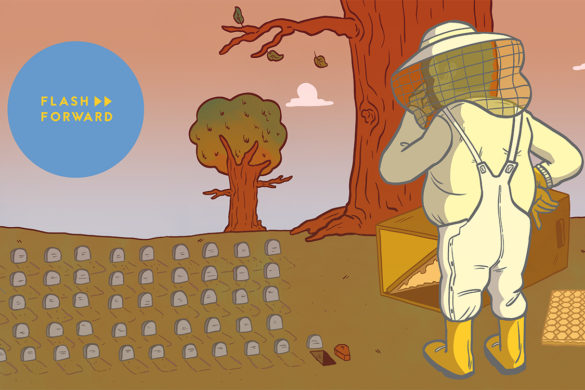
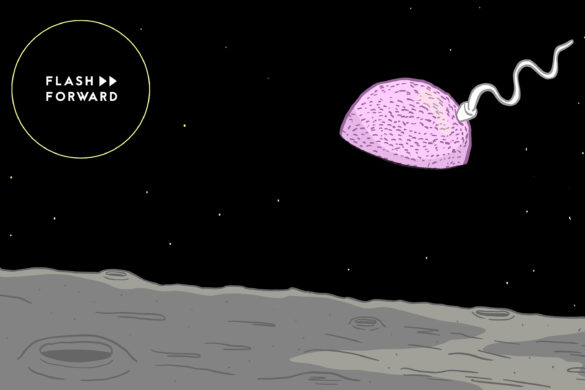

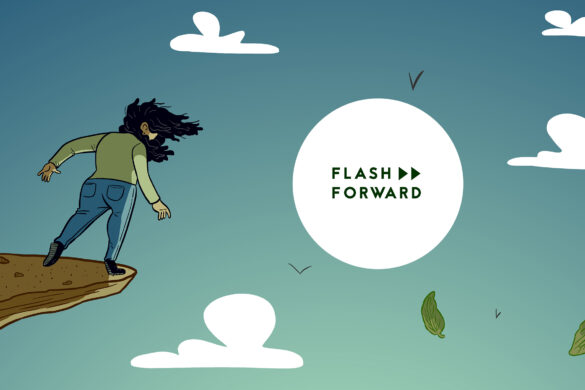
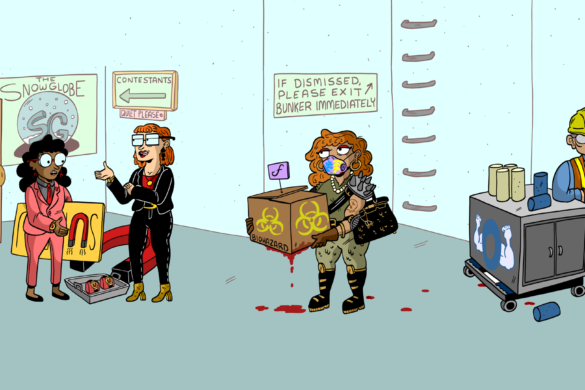
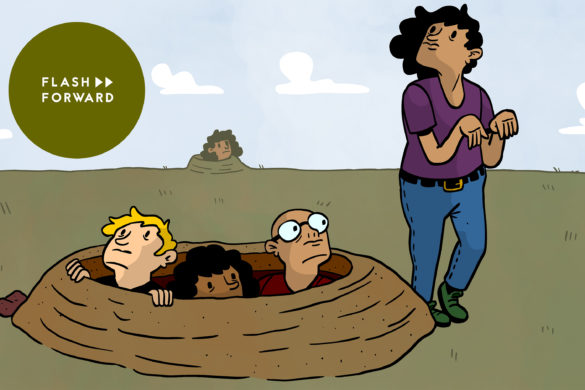
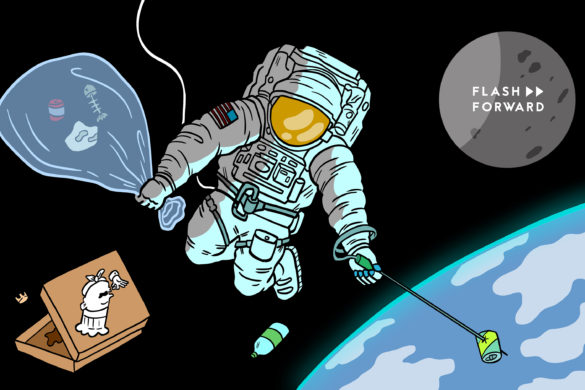
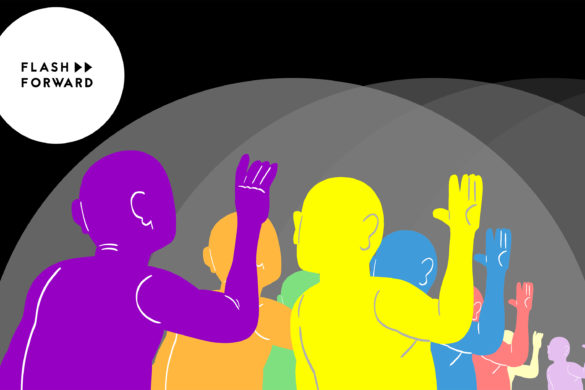
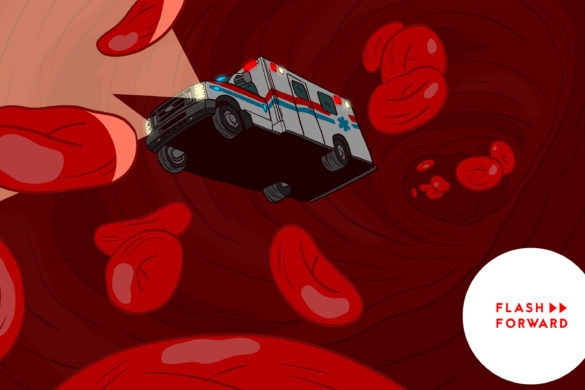
5 comments
[…] BODIES: InkRx | Flash Forward – […]
You failed to mention any military applications like: having sensors that can indicate chemical, biological and radioactive contaminants in the air/body of the soldier. Maybe having the “tattoos ” glow to tell others to do not touch/stay away from infected or radioactive bodies. Then there are the basic replacement processes that a Fitbit could do, but the tattoo will do and include a real time tracking of the soldier and maybe some injectables like adrenaline for emergencies that could be administered by the soldier or remotely. Just some thoughts on the subject. I enjoy your podcast btw 🙂.
Thanks Shawn! I do mention the military really briefly but don’t delve into that side too deeply. (I say “I’ve read articles proposing that the military use these tattoos on their soldiers, to help monitor their health and biometrics.”)
[…] BODIES: InkRx […]
[…] and Producer] May 2019. ‘BODIES: INKRX’ Flash Forward [Podcast] Available at: https://www.flashforwardpod.com/2019/05/21/bodies-inkrx/ [accessed 26 April 2021]FORENSIC ARCHITECTURE: Available at: https://www.forensic-architecture.org/ […]